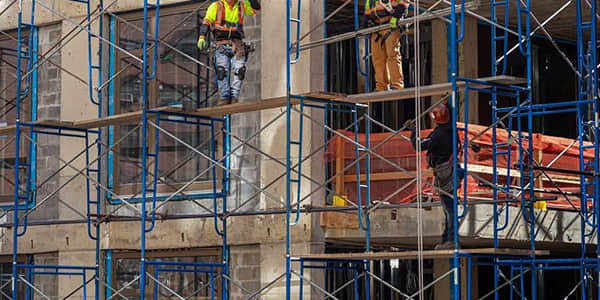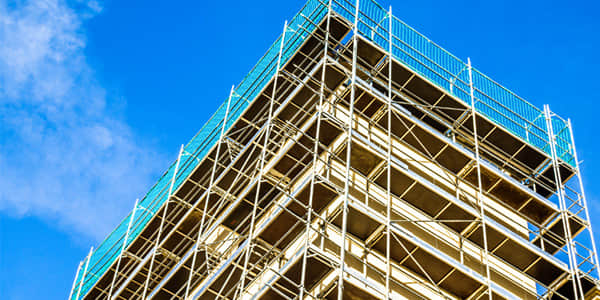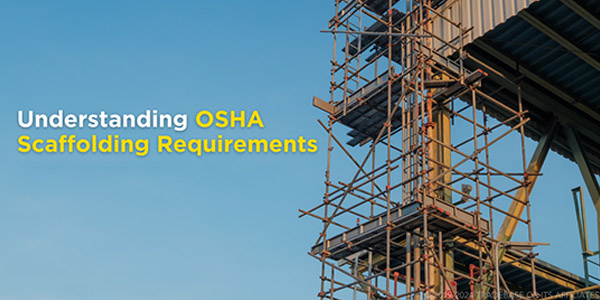What Type of Scaffold is Prohibited? Navigating Safety Regulations at Height
May 15, 2025Working at height is inherently risky, scaffolds are great tools that allow construction and maintenance work to be carried out in a safe manner at heights. Every scaffold design has its advantages and disadvantages. Importantly, not all scaffolds or scaffolding setups are permitted for use. Knowing what is prohibited scaffolds is more than a question of compliance. It is also about the safety of the worker and, knowing that, it is necessary to prevent serious accidents from happening.
This blog post will delve into the types of scaffolds and, perhaps more importantly, the conditions that render a scaffold prohibited from use according to safety standards and regulations.

Safety is the primary reason any type of scaffold or scaffolding setup should be prohibited. Regulatory bodies like the Occupational Safety and Health Administration (OSHA) in the United States, and similar worldwide organizations, are based on a minimum standard based on years of research, accident history, and engineering rationale. They are created through analysis of potential hazards attached to whatever type of work is being done. For example, scaffolds that do not meet the requirements are unsafe, so are prohibited, to protect workers from fall hazards, hazards of structural collapse, falling objects, and electrocution.

While it is less about a single, universally "prohibited type" of scaffold design (because many can be used safely if it complies); It's more about the type or arrangement of scaffold that makes it illegal and hazardous. Here are the main areas that are considered prohibited scaffolding:
One of the most obvious categories of prohibited scaffolding includes structures that have been built with materials that are not scaffolding or that do not comply with acceptable engineering standards.
· Why Prohibited: they are unpredictable in load-bearing capacity, stability, and material integrity. These structures have not been formally tested or certified. Using accommodation materials like oil drums, stacked blocks, or non-structural lumber as primary support systems are classified as dangerous and are prohibited in every site.
No scaffold shall be used if it is damaged or has defective parts, regardless of type, or even the quality of the scaffold.
· Examples: bent and cracked tubes, split and decaying planks, couplers or fittings that are missing or damaged, corroded components, broken or missing guard rails, damaged base plates, or wheels/casters that do not work at all.
· Why Prohibited: Damaged components in the scaffold can compromise the structural integrity of the entire system leading to an unsafe scaffold that may collapse or cause instability when loaded.
Even if approved scaffolding components are used, if the components are not assembled correctly, or components are modified and used in an unapproved way, the scaffold cannot be used, as the scaffold is prohibited.
· Examples: Not using manufacturer's specifications, improperly bracing the scaffold, improperly tying or anchoring to the structure, mixing and matching design from different manufacturers without verifying compatibility, modifying components (welding without certification, drilling holes).
· Why Prohibited: Improper assembly and unauthorized modification can significantly reduce the capacity of the scaffold and its stability, and put it at risk of sway, tipping, or collapse. Unauthorized modifications can introduce weak points or change how designed loads are distributed.
Regulatory standards mandate specific safety features to prevent falls and protect workers below. A scaffold missing these features is prohibited.
· Examples: Absence of standard guardrails (top rail, mid-rail, and toe boards) on elevated platforms, insufficient or improperly secured planking leaving gaps, lack of adequate access like ladders or stair towers, or absence of fall protection systems where required.
· Why Prohibited: Guardrails and planking are primary defenses against falls from height. Proper access prevents dangerous climbing.
Every scaffold is designed to support a specific maximum load (including workers, tools, and materials). Overloading a scaffold is prohibited and extremely dangerous.
· Examples: Exceeding the weight limit specified by the manufacturer or design engineer, or using a light-duty scaffold for heavy-duty tasks.
· Why Prohibited: Exceeding the load capacity can lead to structural failure and collapse.
Environmental factors or site-specific hazards can render an otherwise compliant scaffold temporarily or permanently prohibited for use until conditions change or hazards are mitigated.
· Examples: Scaffolds affected by high winds, ice, snow accumulation, unstable ground conditions beneath the base plates, proximity to energized power lines without proper clearance or insulation, or placement in areas with active traffic or falling debris without protection.
· Why Prohibited: Environmental factors can compromise stability. Proximity to hazards like power lines or traffic creates additional, unacceptable risks.
While less common on modern, regulated job sites, some historical scaffolding methods may be explicitly or implicitly prohibited by current standards due to their inherent lack of safety features or stability compared to modern systems. An example often cited in the past includes certain types of unsupported or minimally supported structures that predate modern tube and coupler, system, or frame scaffolds designed to rigorous standards. Needle beam scaffolds, while sometimes still used in very specific niche applications, are often subject to severe restrictions or outright prohibition in many jurisdictions due to their complexity and risk if not expertly designed and erected.
· Why Prohibited: Lack of built-in safety factors, reliance on potentially unreliable support methods, and absence of standardized components or erection procedures.

In the United States, OSHA's scaffolding standards (29 CFR 1926 Subpart L) are the primary guide. They don't always list "prohibited types" by name but rather define the requirements for all scaffolds. A scaffold is effectively prohibited if it fails to meet any applicable requirement within these standards, including design, construction, access, fall protection, and use.
Key requirements that, if not met, lead to prohibition include:
Ultimately, the question "What type of scaffold is prohibited?" is best answered by focusing on safety compliance. Any scaffold that is non-standard, damaged, improperly erected, lacking safety features, overloaded, or affected by hazardous conditions is prohibited from use.
Ignoring these regulations and using unsafe scaffolding puts workers at unacceptable risk of serious injury or fatality. Site managers, supervisors, and workers must be trained to identify non-compliant scaffolding and understand the critical importance of using only scaffolds that are properly designed, erected, inspected, and maintained according to current safety standards.
Always consult regulatory guidelines specific to your location and ensure a competent person inspects scaffolding before it is used. Prioritizing safety isn't just a regulation; it's a life-saving practice.
Q1: Can I use a ladder as a scaffold?
Q2: Are wooden scaffolds allowed?
Q3: What happens if I use a prohibited scaffold?
Using banned scaffolding can result in:
OSHA fines and penalties
Increased risk of workplace injuries
Legal liability in case of accidents
1926.451-General requirements —— OSHA
Scaffold Safety Flashcards —— Quizlet